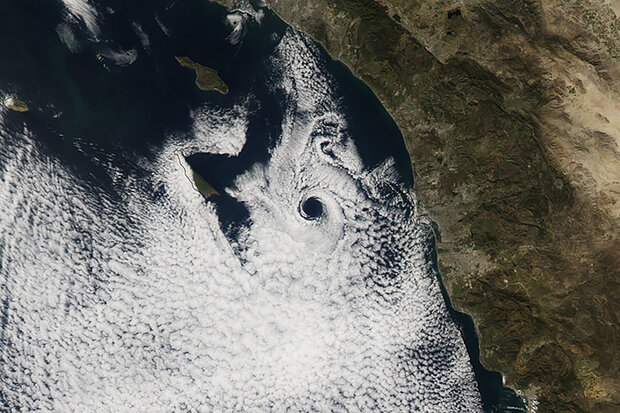Future ocean eddy projections improve understanding of climate change impacts along the California coast

The Catalina Eddy produces an atmospheric vortex, seen by satellite in 2013. Credit: NASA

The Catalina Eddy produces an atmospheric vortex, seen by satellite in 2013. Credit: NASA
Along the coast of California, the California Current System (CCS) is a cold water current that moves southward and causes seasonal upwelling and circular currents of water called eddies. The upwelling and eddies contribute to a diverse and productive ecosystem, supporting fisheries, recreational activities, and local economies, but the impacts of climate change on these CCS processes are poorly understood.
A new modeling study, funded in part by the Climate Program Office’s Climate Variability & Predictability (CVP) and Modeling, Analysis, Predictions and Projections (MAPP) Programs, uses projected climate conditions through 2100 to produce high-resolution estimates of ocean current variability over scales of ten to a hundred kilometers. Researchers from the University of California Santa Cruz, NOAA’s Southwest Fisheries Science Center, and NOAA’s Physical Sciences Laboratory indicate that eddies are projected to become more variable and intense toward the end of the century compared to a 1980-2010 reference period.
Read more at the link below.